Have you ever wondered how your smartphone knows exactly what you’re looking for, or how Netflix always seems to recommend the perfect movie? Welcome to the fascinating world of Artificial Intelligence (AI)! It’s not just a buzzword from sci-fi movies anymore; AI is all around us, quietly revolutionizing our daily lives in ways we might not even realize.
But what exactly is Artificial Intelligence in simple terms? Imagine having a super-smart digital assistant that can learn, reason, and make decisions – that’s AI in a nutshell. From powering self-driving cars to helping doctors diagnose diseases, AI is rapidly changing the landscape of various industries. However, with great power comes great responsibility, and the rise of AI also brings important questions about its impact on our workforce, privacy, and even the future of humanity itself.
In this blog post, we’ll demystify AI and explore its various facets. We’ll dive into what AI really means, how it’s transforming the workplace, and the different types of AI that exist. We’ll also examine the benefits and potential dangers of this technology, and take a closer look at its applications in healthcare, education, and computer science. So, buckle up and get ready to embark on an enlightening journey through the world of Artificial Intelligence!
Table of Contents
What Does Artificial Intelligence (AI) Mean?

Artificial Intelligence Examples
Artificial Intelligence (AI) is all around us, often working behind the scenes to make our lives easier. Here are some common examples of AI in action:
- Virtual Assistants: Siri, Alexa, and Google Assistant
- Recommendation Systems: Netflix, Spotify, and Amazon
- Facial Recognition: iPhone’s Face ID and Facebook’s photo tagging
- Autonomous Vehicles: Tesla’s Autopilot and Waymo’s self-driving cars
- Chatbots: Customer service bots on websites and messaging apps
| AI Application | Description | Example |
|---|---|---|
| Virtual Assistants | Voice-activated AI that can answer questions and perform tasks | Siri, Alexa |
| Recommendation Systems | AI that suggests content based on user preferences | Netflix, Spotify |
| Facial Recognition | AI that identifies individuals in images or video | Face ID, Facebook tagging |
| Autonomous Vehicles | AI that controls and navigates vehicles | Tesla Autopilot |
| Chatbots | AI that simulates human conversation | Customer service bots |
What Does Artificial Intelligence (AI) Do?
AI performs a wide range of tasks that mimic human intelligence:
- Pattern Recognition: AI can identify patterns in data, images, and speech.
- Decision Making: AI can analyze complex situations and make informed decisions.
- Natural Language Processing: AI can understand, interpret, and generate human language.
- Learning and Adaptation: AI can improve its performance over time through machine learning.
- Problem Solving: AI can tackle complex problems and find optimal solutions.
AI’s capabilities continue to expand, revolutionizing industries and transforming the way we live and work. As we explore AI’s potential, it’s crucial to consider its impact on various sectors, including the workforce.
Artificial Intelligence (AI) in The Workforce

Impact on Job Market
Artificial Intelligence (AI) is reshaping the workforce in profound ways. As AI technologies advance, they are both eliminating certain jobs and creating new opportunities. Here’s a breakdown of AI’s impact on the job market:
| Job Category | AI Impact |
|---|---|
| Routine Tasks | High risk of automation |
| Creative Roles | Lower risk, AI augments human creativity |
| Data Analysis | AI enhances efficiency, but human oversight needed |
| Customer Service | Chatbots handle basic queries, humans manage complex issues |
| Healthcare | AI assists diagnostics, humans provide empathy and complex care |
Skills in Demand
To thrive in an AI-driven workforce, professionals need to develop new skills:
- AI literacy
- Data analysis and interpretation
- Critical thinking and problem-solving
- Emotional intelligence
- Adaptability and continuous learning
Collaboration Between Humans and AI
AI is not just replacing jobs; it’s also augmenting human capabilities. In many industries, AI works alongside humans, enhancing productivity and decision-making. This collaboration allows workers to focus on higher-value tasks that require uniquely human skills like empathy, creativity, and complex problem-solving.
Now that we’ve explored AI’s impact on the workforce, let’s delve into the concept of Artificial General Intelligence (AGI) and how it differs from current AI implementations.
What is Artificial General Intelligence (AGI)?
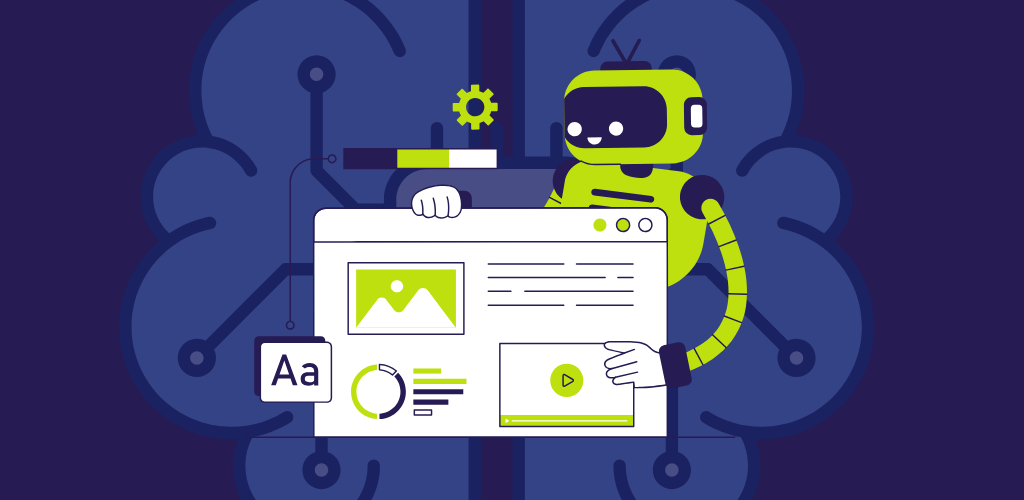
Strong AI vs. Weak AI
Artificial General Intelligence (AGI) is often discussed in terms of “Strong AI” versus “Weak AI.” This distinction is crucial for understanding the current state and future potential of AI technology.
Weak AI (Narrow AI)
Weak AI, also known as Narrow AI, refers to AI systems designed to perform specific tasks within a limited domain. These systems excel at their designated functions but lack general intelligence.
Characteristics of Weak AI:
- Task-specific
- Limited to predefined parameters
- Unable to transfer knowledge between domains
- Lacks self-awareness and consciousness
Examples of Weak AI:
- Virtual assistants (Siri, Alexa)
- Image recognition software
- Recommendation algorithms
Strong AI (AGI)
Strong AI, or Artificial General Intelligence (AGI), represents AI systems with human-like cognitive abilities across various domains.
Characteristics of Strong AI:
- Capable of general problem-solving
- Learns and adapts to new situations
- Transfers knowledge between domains
- Potentially self-aware and conscious
| Aspect | Weak AI | Strong AI (AGI) |
|---|---|---|
| Scope | Narrow, specific tasks | Broad, general intelligence |
| Learning | Limited to training data | Continuous, adaptive learning |
| Creativity | Limited or none | Potential for true creativity |
| Consciousness | None | Possible self-awareness |
While Weak AI is prevalent in our daily lives, Strong AI remains a theoretical concept that researchers are actively working towards. The development of AGI could revolutionize various fields, from scientific research to complex decision-making processes.
The 4 Types of AI
A. Reactive machines
Reactive machines are the most basic type of AI, designed to respond to specific inputs without any memory or past experiences. These systems operate purely on the present situation, making decisions based on predefined rules and patterns.
Key characteristics:
- No memory or learning capabilities
- Purely reactive to current inputs
- Consistent output for the same input
| Advantages | Limitations |
|---|---|
| Fast response time | Cannot adapt to new situations |
| Highly specialized | Limited decision-making capacity |
| Predictable behavior | No ability to improve over time |
Examples of reactive machines include:
- IBM’s Deep Blue chess computer
- Google’s AlphaGo (in its initial version)
B. Limited Memory Machines
Limited memory AI systems can use past experiences to inform current decisions. These machines can store and retrieve data for a short period, allowing them to learn and adapt to some extent.
Applications:
- Self-driving cars
- Virtual assistants
- Recommendation systems
C. Theory Of Mind Machines
Theory of mind AI refers to systems that can understand and interpret human emotions, beliefs, and intentions. This type of AI is still largely theoretical and represents a significant step towards more human-like artificial intelligence.
D. Self-Aware Machines
Self-aware AI is the most advanced and currently hypothetical form of artificial intelligence. These machines would possess consciousness, self-awareness, and the ability to understand their own existence.
E. What is Generative Artificial Intelligence?
Generative AI is a subset of artificial intelligence that can create new content, such as images, text, or music, based on patterns learned from existing data. This technology has gained significant attention recently due to its creative capabilities and potential applications across various industries.
AI Benefits And Dangers
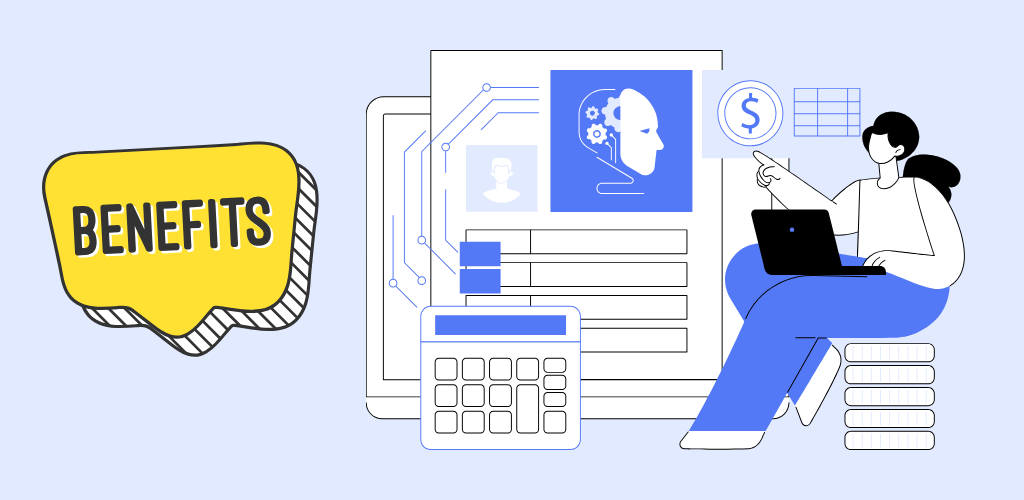
AI Benefits
AI offers numerous advantages across various sectors:
- Improved Efficiency: AI automates repetitive tasks, freeing up human resources for more complex work.
- Enhanced Accuracy: AI systems can process vast amounts of data with minimal errors.
- 24/7 Availability: Unlike humans, AI doesn’t need breaks or sleep, ensuring constant productivity.
- Personalized Experiences: AI can tailor services and products to individual preferences.
Here’s a comparison of AI benefits in different industries:
| Industry | AI Benefit |
|---|---|
| Healthcare | Early disease detection, personalized treatment plans |
| Finance | Fraud detection, algorithmic trading |
| Education | Adaptive learning systems, automated grading |
| Manufacturing | Predictive maintenance, quality control |
AI Dangers
While AI brings many benefits, it also poses potential risks:
- Job Displacement: Automation may lead to unemployment in certain sectors.
- Privacy Concerns: AI systems often require vast amounts of personal data.
- Bias and Discrimination: AI algorithms can perpetuate existing societal biases.
- Security Risks: AI systems can be vulnerable to hacking or malicious use.
It’s crucial to address these concerns as AI continues to evolve. Ethical guidelines and regulations are necessary to ensure AI development aligns with human values and societal needs. As we move forward, balancing the benefits and risks of AI will be essential for its responsible implementation across various domains.
Learn More About AI Tools
What is Artificial Intelligence and Data Science?

Artificial Intelligence (AI) and Data Science are closely related fields that often work in tandem to drive innovation and insights. While they share some similarities, they have distinct focuses and applications.
Which is Best: Artificial Intelligence (AI) Or Data Science?
The question of which is “best” between AI and Data Science is not straightforward, as both fields have their unique strengths and applications. Let’s compare them:
| Aspect | Artificial Intelligence | Data Science |
|---|---|---|
| Focus | Creating intelligent machines | Extracting insights from data |
| Key Skills | Machine learning, deep learning, natural language processing | Statistics, data analysis, data visualization |
| Applications | Autonomous systems, robotics, virtual assistants | Business intelligence, predictive modeling, trend analysis |
| Goal | Mimicking human intelligence | Making data-driven decisions |
| Tools | TensorFlow, PyTorch, scikit-learn | Python, R, SQL, Tableau |
Both AI and Data Science are crucial in today’s data-driven world:
- AI excels in:
- Automating complex tasks
- Developing self-learning systems
- Creating innovative solutions for various industries
- Automating complex tasks
- Data Science shines in
- Uncovering patterns in large datasets
- Providing actionable insights for businesses
- Guiding strategic decision-making processes
- Uncovering patterns in large datasets
In reality, AI and Data Science often complement each other. Many AI systems rely on data science techniques for data preparation and analysis, while data science projects may incorporate AI algorithms for advanced predictive modeling. The choice between AI and Data Science depends on specific project goals and requirements.
What are Artificial Intelligence (AI) Techniques?
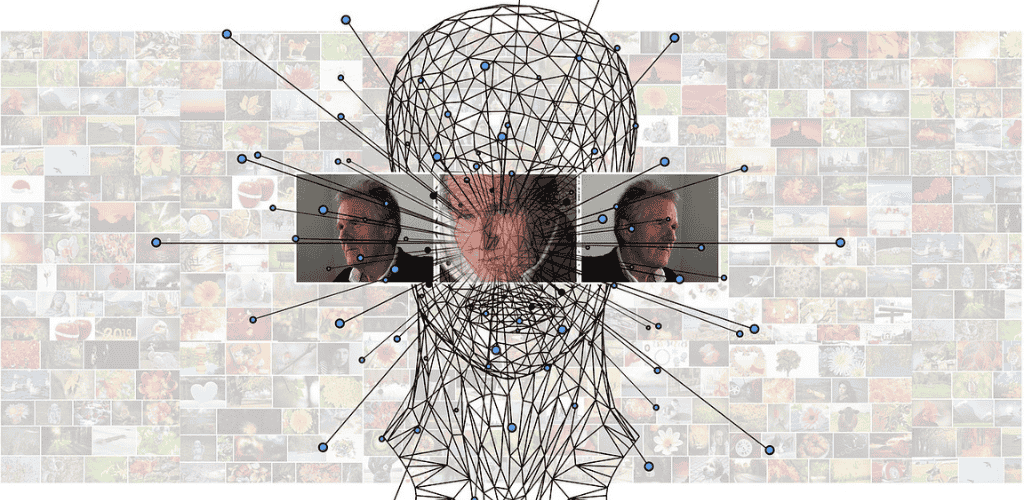
Machine Learning
Machine Learning is a cornerstone of AI techniques, enabling systems to learn from data without explicit programming. It includes:
- Supervised Learning: Models trained on labeled data
- Unsupervised Learning: Finds patterns in unlabeled data
- Reinforcement Learning: Learns through interaction with an environment
| Type | Data | Use Case |
|---|---|---|
| Supervised | Labeled | Classification, Regression |
| Unsupervised | Unlabeled | Clustering, Anomaly Detection |
| Reinforcement | Reward-based | Game AI, Robotics |
Natural Language Processing (NLP)
NLP focuses on the interaction between computers and human language. Key techniques include:
- Text Classification
- Sentiment Analysis
- Machine Translation
- Named Entity Recognition
Computer Vision
This AI technique enables machines to interpret and make decisions based on visual input. Applications include:
- Image Recognition
- Object Detection
- Facial Recognition
- Autonomous Vehicles
Expert Systems
These AI systems emulate human expertise in specific domains, using:
- Rule-Based Reasoning
- Fuzzy Logic
- Bayesian Networks
Now that we’ve explored various AI techniques, let’s examine how these are applied in different sectors, starting with healthcare.
What is Artificial Intelligence in Healthcare?
What are examples of artificial intelligence (AI) in healthcare?
Artificial Intelligence is revolutionizing healthcare in numerous ways, offering innovative solutions to improve patient care, diagnostics, and overall efficiency. Here are some notable examples of AI applications in healthcare:
- Medical Imaging and Diagnostics:
- AI-powered image analysis for detecting diseases
- Automated interpretation of X-rays, MRis, and CT scans
- Early detection of cancers and other abnormalities
- AI-powered image analysis for detecting diseases
- Personalized Treatment Plans:
- AI algorithms analyzing patient data to suggest tailored treatments
- Predictive models for disease progression and treatment outcomes
- AI algorithms analyzing patient data to suggest tailored treatments
- Drug Discovery and Development:
- AI-driven screening of potential drug compounds
- Accelerated clinical trial processes
- AI-driven screening of potential drug compounds
- Virtual Health Assistants:
- AI chatbots for patient triage and initial symptom assessment
- Voice-activated assistants for medication reminders and health tracking
- AI chatbots for patient triage and initial symptom assessment
- Robotic Surgery:
- AI-enhanced surgical robots for precision procedures
- Real-time guidance and decision support during operations
- AI-enhanced surgical robots for precision procedures
| AI Application | Benefits |
|---|---|
| Medical Imaging | Faster and more accurate diagnoses |
| Personalized Treatment | Improved patient outcomes |
| Drug Discovery | Reduced time and costs in drug development |
| Virtual Assistants | Enhanced patient engagement and care management |
| Robotic Surgery | Increased precision and reduced recovery times |
These AI applications are transforming healthcare by improving diagnostic accuracy, streamlining processes, and enhancing patient care. As AI technology continues to advance, we can expect even more innovative solutions in the healthcare sector.
What is Artificial Intelligence in Education?
AI in Education: Revolutionizing Learning
Personalized Learning Experiences
AI in education enables tailored learning experiences for students. Adaptive learning platforms use AI algorithms to analyze student performance and adjust content difficulty accordingly. This personalization helps students learn at their own pace, focusing on areas that need improvement.
Intelligent Tutoring Systems
AI-powered tutoring systems provide students with one-on-one guidance, offering instant feedback and support. These systems can:
- Identify knowledge gaps
- Provide targeted explanations
- Offer practice exercises
- Track progress over time
Administrative Tasks Automation
AI streamlines administrative tasks for educators, allowing them to focus more on teaching:
| Task | AI Application |
|---|---|
| Grading | Automated essay scoring |
| Attendance | Facial recognition systems |
| Scheduling | Optimized timetable creation |
Smart Content Creation
AI assists in developing intelligent textbooks, study guides, and learning materials. These resources can adapt to individual learning styles and preferences, making education more engaging and effective.
With AI’s potential to transform education, we’ll now explore another exciting application: generative AI and its impact on various industries.
What is Generative AI?
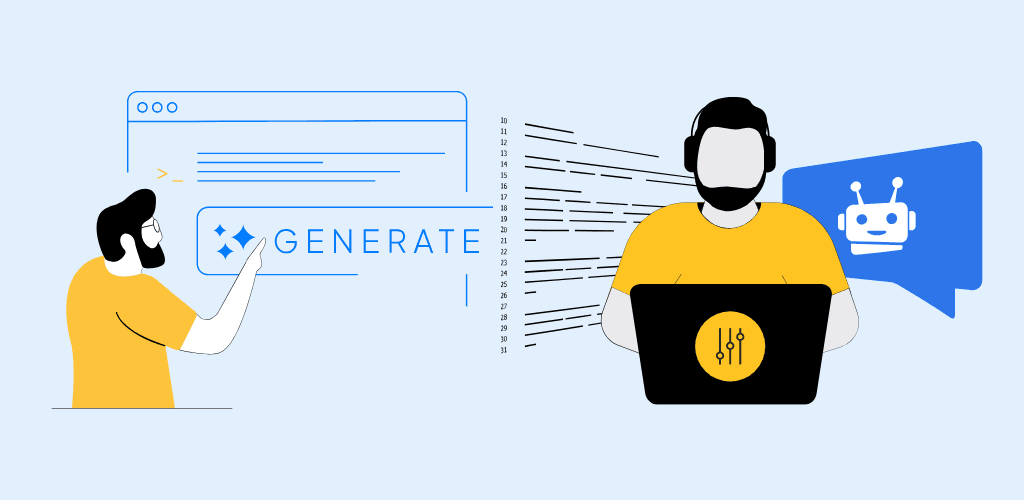
What Does Generative AI Mean?
Generative AI refers to a subset of artificial intelligence that can create new content, such as text, images, music, or videos, based on patterns and information it has learned from existing data. Unlike traditional AI systems that analyze and interpret data, generative AI has the ability to produce original outputs that didn’t previously exist.
Key characteristics of generative AI include:
- Content creation
- Pattern recognition
- Adaptability
- Creativity
Here’s a comparison of generative AI with other AI types:
| AI Type | Primary Function | Output |
|---|---|---|
| Generative AI | Content creation | New, original content |
| Analytical AI | Data analysis | Insights and predictions |
| Reactive AI | Real-time responses | Predetermined actions |
| Reinforcement Learning | Optimization | Improved strategies |
Generative AI has numerous applications across various industries:
- Art and design: Creating unique artwork or assisting designers
- Content writing: Generating articles, stories, or marketing copy
- Music composition: Producing original melodies and harmonies
- Product development: Generating new product ideas or designs
As generative AI continues to evolve, it’s poised to revolutionize creative industries and reshape how we approach content creation and innovation. Next, we’ll explore the best programming languages for AI development, including those used in generative AI systems.
What is The Best AI Programming Language?
Popular AI Programming Languages
AI development relies heavily on programming languages that can handle complex algorithms and large datasets. Here are some of the most widely used languages for AI:
- Python
- R
- Java
- C++
- Julia
Python: The Front-Runner
Python has emerged as the leading language for AI development due to its simplicity, versatility, and robust ecosystem of libraries. Here’s why Python stands out:
- Easy to learn and read
- Extensive libraries like TensorFlow, PyTorch, and scikit-learn
- Strong community support and documentation
- Ideal for data manipulation and analysis
Comparison of AI Programming Languages
| Language | Strengths | Best For |
|---|---|---|
| Python | Versatility, libraries | Machine learning, deep learning |
| R | Statistical analysis | Data visualization, statistical modeling |
| Java | Scalability, portability | Large-scale AI applications |
| C++ | Speed, efficiency | Real-time AI systems, game AI |
| Julia | High performance | Scientific computing, numerical analysis |
While Python is often considered the best overall choice for AI programming, the ideal language depends on the specific project requirements and developer expertise. Each language has its strengths, and many AI projects utilize multiple languages to leverage their unique advantages.
What is Artificial Intelligence in Computer Science?

Artificial Intelligence in Computer Science
Artificial Intelligence (AI) in computer science refers to the development of intelligent machines that can perform tasks typically requiring human intelligence. It’s a multidisciplinary field that combines computer science, mathematics, and cognitive psychology to create systems capable of learning, problem-solving, and decision-making.
Core Components of AI in Computer Science
- Machine Learning
- Natural Language Processing
- Computer Vision
- Robotics
- Expert Systems
AI Algorithms and Techniques
AI in computer science relies on various algorithms and techniques, including:
- Neural Networks
- Deep Learning
- Reinforcement Learning
- Genetic Algorithms
- Fuzzy Logic
Applications in Computer Science
| Application | Description |
|---|---|
| Automated Reasoning | Solving complex problems and making logical deductions |
| Pattern Recognition | Identifying patterns in data for classification and prediction |
| Intelligent Agents | Creating autonomous software that can interact with its environment |
| Game AI | Developing intelligent opponents in video games |
AI in computer science is not just about creating intelligent machines; it’s about understanding and replicating human cognitive processes. This field continues to evolve, pushing the boundaries of what computers can achieve and opening up new possibilities for solving complex problems across various domains.
As we explore AI’s role in computer science, it’s crucial to consider its practical applications in different sectors. Next, we’ll delve into how AI is transforming healthcare, revolutionizing patient care and medical research.
Artificial Intelligence is a transformative technology that impacts nearly every aspect of our lives. From its basic definition to its applications in the workforce, healthcare, education, and computer science, AI has the potential to revolutionize how we work, learn, and live. We’ve explored various types of AI, including artificial general intelligence and generative AI, as well as the benefits and potential dangers associated with this technology.
As AI continues to evolve, it’s crucial to stay informed about its development and applications. Whether you’re interested in pursuing a career in AI or simply want to understand its impact on society, learning about AI techniques, programming languages, and its intersection with data science is a valuable endeavor. By embracing the potential of AI while remaining mindful of its challenges, we can work towards harnessing this powerful technology for the betterment of humanity.

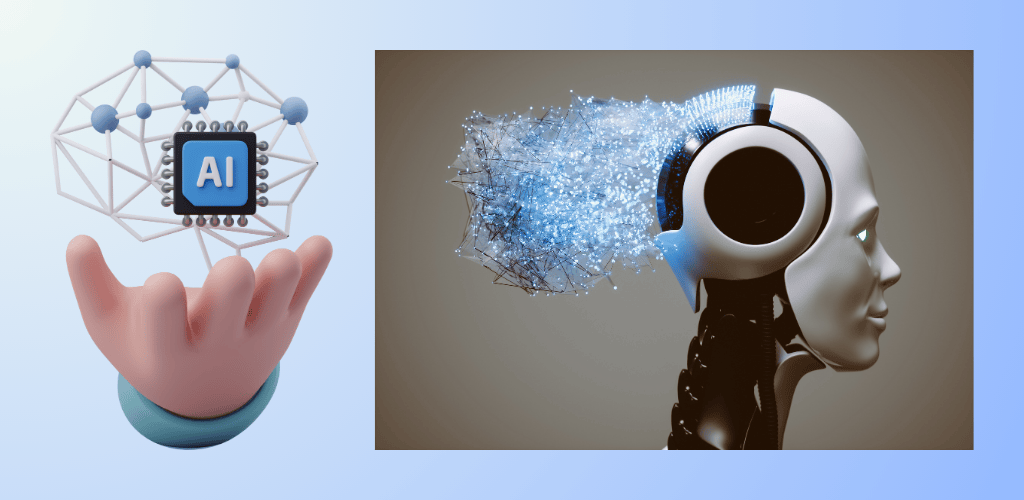






[…] is Artificial Intelligence with […]